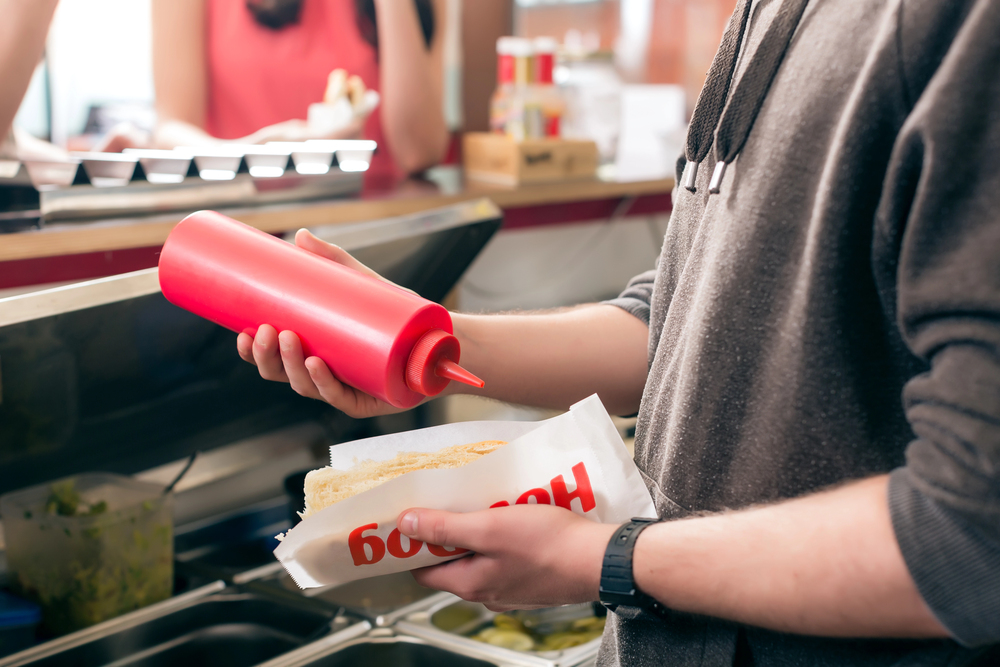I thought about this passage while reading David Henderson’s EconLog post about further declines in the quality of the $1.50 Costco Hot Dog. Episode 374 of Anthony Davies’s and James Harrigan’s podcast “Words and Numbers” talks about how much beer and hot dog prices have risen at baseball stadiums. The $1 Kahn’s hot dogs I used to buy at Riverfront Stadium in Cincinnati live on in memory only.
According to polling data from Data for Progress, likely voters left, right, and center blame corporate food manufacturers and retailers “raising prices to maximize profits” for rising prices. The closest thing the poll has to any variation on “too much money chasing too few goods” is “The Policies of President Joe Biden,” which could mean just about anything President Biden has done. The Federal Reserve is conspicuously absent from the list of potential suspects. I’m not sure it would have occurred to Data for Progress to include monetary policy in the poll.
The shrinkflation blame game illustrates John Maynard Keynes’s argument–and it’s not clear Lenin ever actually said anything like what Keynes attributes to him. Inflation doesn’t just make prices and money balances harder to interpret. It also engages all the visible forces of political law on the side of destruction because higher prices for gas and groceries have a lot of salience for voters, which means populist politicians have something to stamp their feet and pound the podium about during election season. Which is more likely to boil the blood and stir the soul: huffing denunciations of C-suite vultures sticking it to average Joes and Janes so they can maximize profits or the quantity theory of money?
Costco, after all, chose to stop offering sauerkraut and onions to hot dog customers. Their suppliers chose to charge higher prices. Some anonymous schmuck in an office building somewhere chose to recommend price hikes to the bosses and directors of the big, faceless agribusiness corporation who are accountable only to bloated, faceless shareholders. Which is easier to do: believe that sinister forces are at work or explain all the terms in the equation M*V = P*Y, total spending–the money supply times the velocity of money, which is the frequency with which each dollar is used–is equal to the product of the price level and the amount of real output (Lawrence White explains this equation in his Concise Encyclopedia article on inflation). When there is more money and productivity isn’t growing by leaps and bounds, Costco basically has no choice but to lower quality if they want to keep the price fixed at $1.50–but if you start trying to explain how Costco and their suppliers are working in a world where too much money is chasing too few goods, and most voters will tune you out faster than you can say “velocity.”
Art Carden is Professor of Economics & Medical Properties Trust Fellow at Samford University.


READER COMMENTS
Craig
Sep 8 2024 at 7:28pm
“but if you start trying to explain how Costco and their suppliers are working in a world where too much money is chasing too few goods, and most voters will tune you out faster than you can say “velocity.”
QFT — Its all fun and games when you don’t get your hot dog with sauerkraut, but when they start accusing grocery stores of price gouging with net margins under 4% the greedflation narrative becomes straight up scary. Stockpile food.
David Seltzer
Sep 9 2024 at 7:33pm
Craig, good point. Recently I stopped at Bruster’s for a hot fudge sundae. The price was nine dollars before sales tax of 6%. It occurred to me me that the marginal cost of the next sundae far exceeded any benefit. I left and went to Publix where I purchased a pint of vanilla ice cream and a jar of Hershey’s hot fudge for eight bucks. I had hot fudge sundaes for two weeks.
Craig
Sep 9 2024 at 8:43pm
Indeed, and I hope you got a BOGO on that ice cream! Px has an app and they have a store ice cream brand as well. Best value in retail ice cream, Dairy Queen has a ‘happy hour’ pricing for certain items one of which is a shake (I do a malt when I do it), still $2.18 post sales tax in TN.
Robert EV
Sep 10 2024 at 12:41pm
?
Craig
Sep 10 2024 at 1:09pm
Point of his quote is that money lies at the root of the most recent inflationary event, but if you try to explain that to people many look at you cross-eyed, I’m picking up on that and the greedflation/price gouging/price control narrative and if implemented will cause food shortages….hence stockpile food.
Comments are closed.